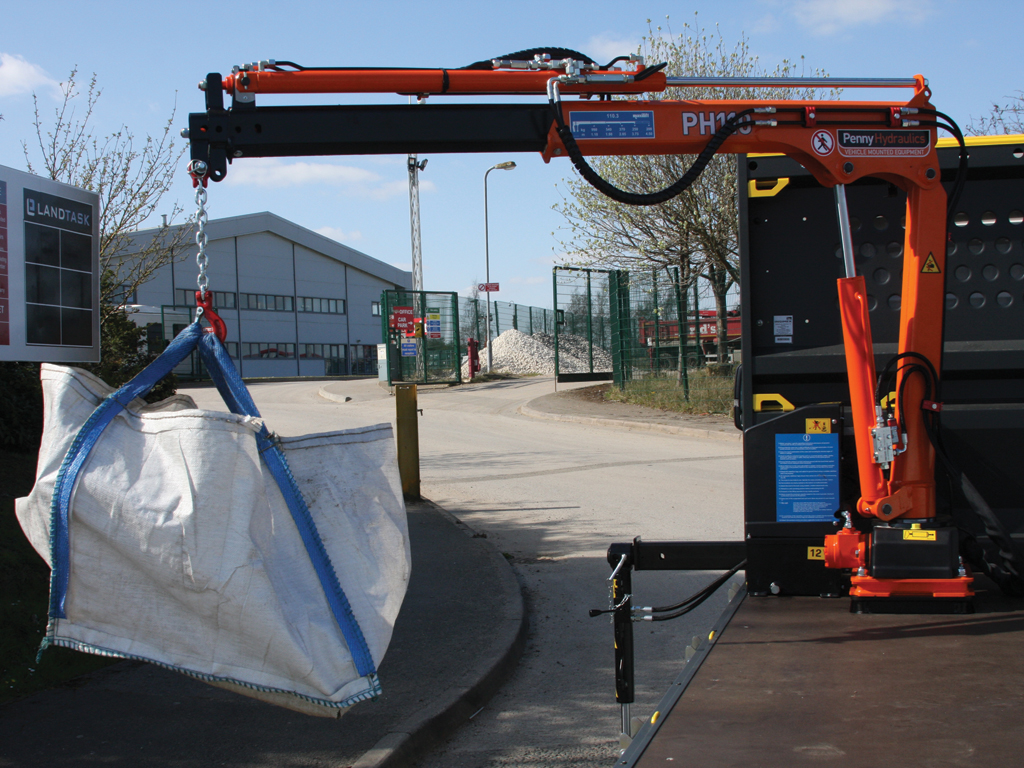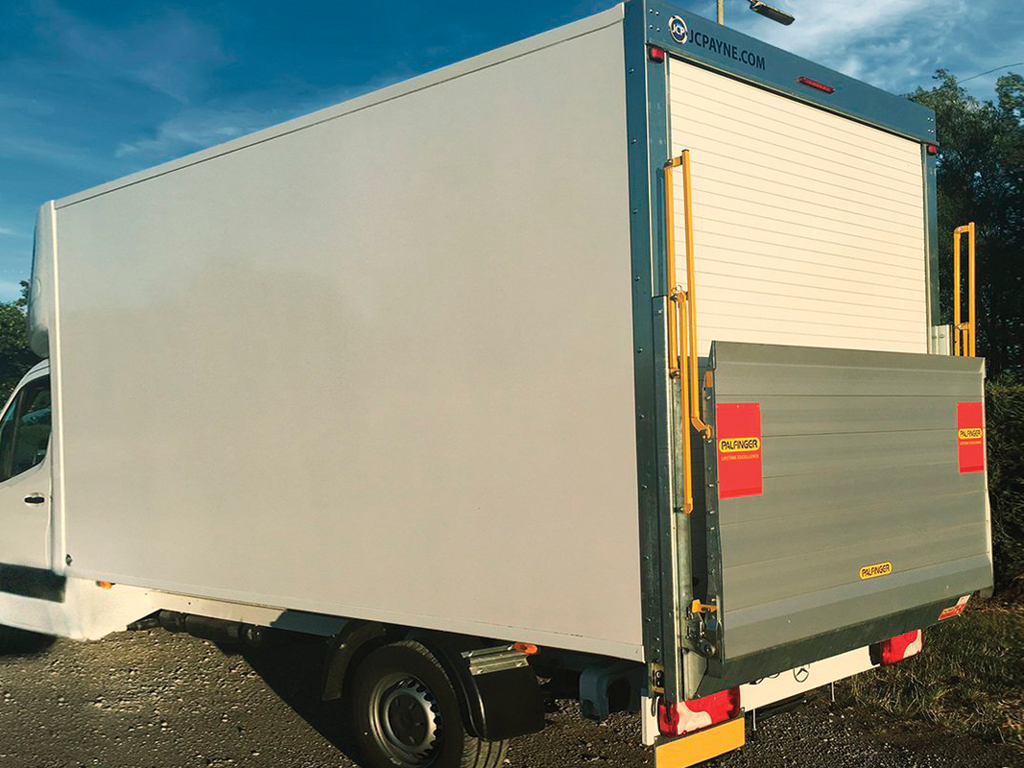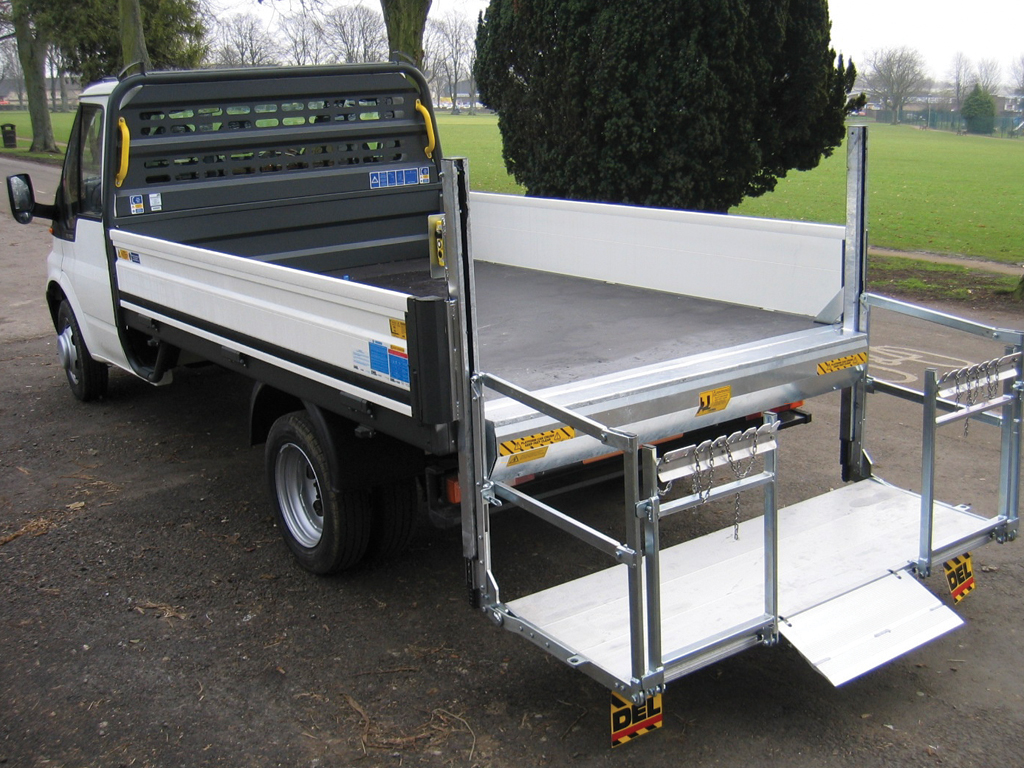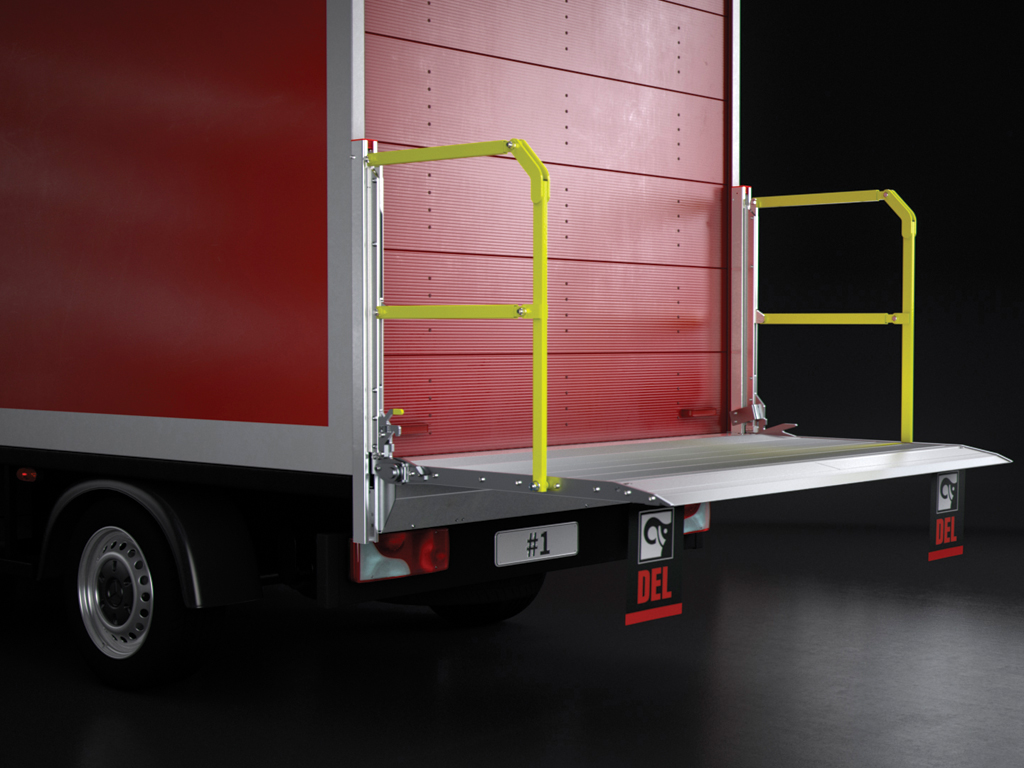Maximising performance for van loading equipment is a question of weight, says Dan Gilkes.
Van chassis weights are rising. This is partly due to the increased use of emissions technologies such as SCR, with AdBlue tanks and dosing systems. But it is also a consequence of a demand for increased safety and driver assistance systems within fleet vehicles. All of which is increasing tare weights and squeezing available payloads, particularly at 3.5-tonnes.
Chassis manufacturers are doing their best to keep weights down, but are also looking to body builders and component suppliers to help lighten the load. This is particularly true in the materials handling market, where both tail-lift and compact crane providers are constantly working to reduce the weight of their equipment, while maintaining or even improving performance and lift capacities. This is being achieved through enhanced engineering and design, but also through the use of advanced materials.
Hiab group company DEL’s fifth-generation DL500 tail-lift is 15-20kg lighter than the previous model, which should make it a popular choice for 3.5-tonne vehicles. It features stronger steels, allowing thinner profiles to be used, along with greater use of composites. In addition, the DL500 is now bolted together rather than welded, making it easier to repair if damaged.
The lift features a redesigned catch and additional anti-tilt design, to improve platform operation. The latest DL500 also comes with a quieter chain roller, for smoother operation and reduced maintenance, yet maximum lift capacity has been maintained at 500kg, despite the lighter overall weight.
Palfinger is another company extending its tail-lift line, with the launch of the MBB C500 Van Flex. The company sells an MBB C500 full width tail-lift, but the Flex model is said to offer improved operational versatility, with a vertically folding platform. The Van Flex uses the same mountings as the standard C500, but with the hydraulic rams all positioned to the left of the vehicle. This allows the folded and stowed platform to sit to one side of the van, leaving the right-hand rear door uncovered when the lift is folded away. Once the platform has been lowered, it can be unfolded to provide a full-width surface across the back of the van.
The company has also launched the V-range of vertical column lifts, formerly sold under the Ratcliff brand. Available with operating loads of 500kg for vans and 1,000kg for trucks, the V-range is offered with multiple platform depths, safety gates, ramps and trolley stops. Palfinger claims that its V500 LQ is the lightest column lift on the market, at around 150kg, though it still offers a 500kg lift capacity. It can be provided with an anodised aluminium platform or a mesh platform to suit the customer.
Compact crane
Tail-lifts are not the only materials handling systems in use on lighter commercial vehicles. Regular truck loading companies such as Palfinger and Hiab also provide smaller models for LCVs, while Penny Hydraulics is best known as a specialist in the light vehicle market. The company’s PH110 crane is now offered by Volkswagen under its Engineered-To-Go ready-built programme, mounted to the latest Crafter Dropside model.
The PH110 offers a lift capacity of 990kg, though it adds just 105kg to the unladen weight of the vehicle. With a 4.5m boom length, it delivers a 180-330° slewing capability, allowing the operator to use the crane over the rear or the sides of the vehicle. The crane is completely integrated with the VW chassis, with dashboard warning lights when the crane and support outrigger legs have not been stowed correctly. The vehicle’s horn will also sound when the van’s battery, which powers the crane, falls below pre-set levels.
Lighter materials boost payload
Volkswagen and Penny have joined forces
The DEL DL500 is said to be 20kg lighter
Chassis weights are increasing





